BREEDING





new general manager operations and service Mark Julian says increasing quality of NZ dairy herd is vital to future success.
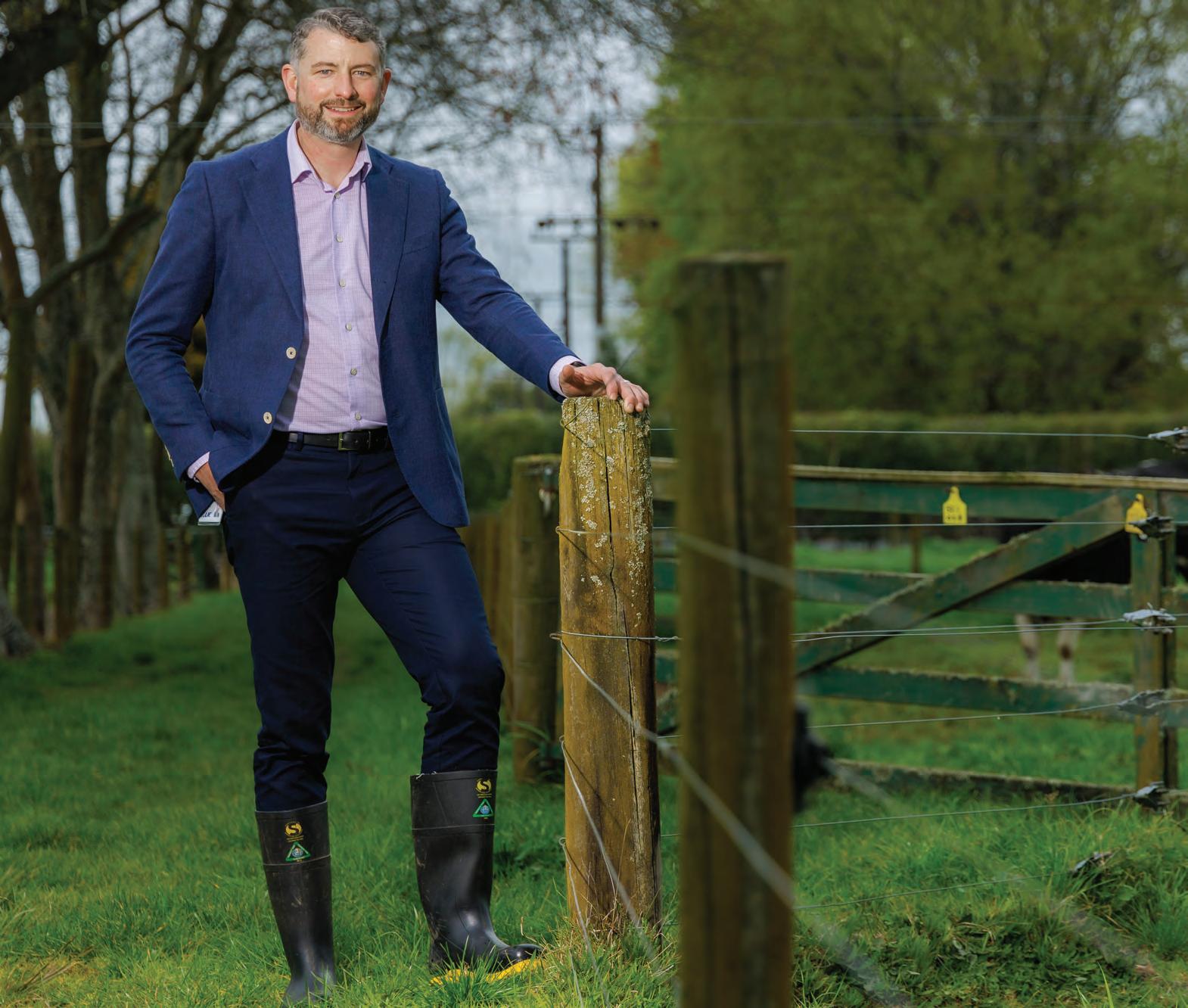


Use Bovilis BVD for 12 months of proven fetal protection1. The longest coverage available.
Exposure to BVD could mean your unborn calves become Persistently Infected (PI’s) - spreading BVD amongst your herd. It is estimated that up to 40% of dairy herds are actively infected with the BVD virus at any given time. The convenience of the longest coverage available along with flexible dosing intervals2 means you can protect this season’s calves no matter when they are conceived.
Avoid an outbreak. Ask your vet about vaccinating with Bovilis BVD or visit bovilis.co.nz

THE GOVERNMENT’S proposal to deal with agricultural emissions has stunned many rural communities who warn that it will decimate them and replace sheep and beef farms with pine trees.
Under the proposal, the Government states its intent to reduce emissions by 10% by 2030 and that farmers will start paying for their emissions by 2025.
But according to Federated Farmers president Andrew Hoggard, this plan put up by government will cause massive economic and social consequences in rural communities. He says the plan would see sheep and beef production drop by up to 20% and dairy by 5%, costing NZ $3 billion.



“We didn’t sign up for this. It’s gut wrenching to think we have a proposal by the Government that rips the heart out of the work we have done and to the families who farm the land. Feds is deeply unimpressed with the Government,” he says.
The 94-page ‘consultation document’ was released at an ‘event’ at a dairy farm in the Wairarapa and people have six weeks to make submissions before a final proposal is reached early next year. The document is a response to the much lauded He Waka Eke Noa (HWEN) submission put to government in May, which offered an alternative to the earlier Green-led scenario to put agriculture into the ETS and to hell with the consequences. HWEN is a consortium of all the rural sector groups and they, after consultation with farmers and growers, came up with a consensus proposal and this was put to government.
At the time, the proposal was hailed by DairyNZ, B+LNZ and others as a win-win solution and that it offered the best solution. Four months on, the same leaders are not happy chappies and it seems that the Government did not rubber stamp their
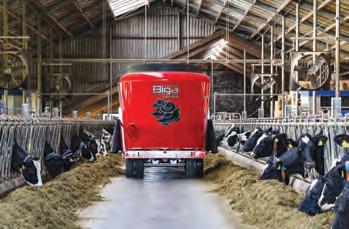
The deal was said to be based on consensus, and despite the outcry from rural NZ, Prime Minister Jacinda Ardern is still claiming it is, but is also acknowledging the pain and impact on sheep and beef farms will suffer if the Government sticks with its plan.

For his part, Agriculture Minister Damien O’Connor claims the vast majority of the HWEN recommendations have been accepted, but there are some issues he says need to be worked through to make sure the scheme is cost effective for
farmers. He says there will be an ability during the consultation to sort out problems and that government is open to suggestions. He admits the proposal is “not exact”.
“But clearly, if people were hoping this was never going to come to fruition and that it wasn’t going to be implemented, they have not been dealing with the world we live in and that is one of facing the ever increasing impacts of climate,” he says.
Claims are being made that the proposal will see more pine trees planted. But O’Connor says, while there will be some new plantings, NZ might end up with mixed farm systems and there will be more small plantings within farm systems.
proposal. The rebel farmer group Groundswell stood aside from HWEN, lambasting them and the Government. But since then the Government has had the HWEN report reviewed, taken other advice and so it seems the talk fest is about to become the work fest.“So yes, there will be more trees but trees in the right places are really what we are seeking rather than whole farm conversions,” he says.
A question remains as to whether there will be strict rules around this.
In terms of the dairy sector, O’Connor says there may be some land changes, which he says has been part and parcel of agriculture for years. He says new opportunities will emerge.
“It’s hard to know how this will play out on dairy farms because every one is different and runs different farm systems.
“But dairy farm ers have been adapt ing over many years and some will know their carbon and envi ronmental footprints and are already making great progress and that will continue.
“For its part, government will step in with more knowledge options and work alongside farmers, especially in the dry stock sector where there are issues,” he says.
WHAT HAPPENED to the historic partnership between industry and government? That’s the question asked by Feds president Andrew Hoggard.
“Our plan was to keep farmers farming. Now they’ll be selling up so fast you won’t even hear the dogs barking on the back of the ute as they drive off.
“The Government’s plan means the small towns, like Wairoa, Pahiatua, Taumaranui –pretty much the whole of the East Coast and central North Island and a good chunk of the top of the South – will be surrounded by pine trees quicker than you can say ‘ETS application’,” he says.
Hoggard believes that it will be goodbye to all the small town cafes, car yards, schools, pubs, rugby clubs, hairdressers and supermarkets that are supported by the agriculture around them.
The ACT Party says
the rest of world will be thanking Jacinda Ardern for destroying NZ’s farming industry.
The party’s primary industries spokesperson Mark Cameron says farmers are the victims of the Government’s obsession with overseas plaudits.
“The Prime Minister wants to go on the world stage and say that NZ is the first country to price agricultural emissions. She won’t admit that her government’s proposal only leads to more emissions,” he says.
Cameron says, under the proposals, most sheep and beef farmers would be better off cashing up by selling their land for permanent carbon storage. Many meat processors will shut down, collapsing many
small regional towns.
National’s agriculture Barbara Kuriger says the announcement threatens the sector consensus by failing to recognise NZ farmers are already the most carbon efficient in
the world. She says the plan could have significant implications for our rural towns and communities. But National has a problem and Dairy News understands that many rural-based MPs
want National to take a stronger stance against the Government’s latest proposal.
With ACT coming out so strongly, it’s felt they could take traditional rural votes away from National.
DAIRYNZ CHAIR Jim van der Poel says, while the proposal has adopted many key recommendations from the He Waka Eke Noa Partnership, the Government has made significant changes that will be a focus for the sector during the six-week consultation.

He says DairyNZ strongly disagrees with some of the changes made to limit the recognition and reward farmers will get for their on-farm planting, by removing classes of sequestration like shelterbelts, woodlots and scattered trees. He says the whole proposal by HWEN was finely balanced and the Government fiddling with a couple of things like the governance structure and the sequestration criteria could change that balance.

“So we just have to work through what that means and if we think they
have got in wrong, go back to them and try get those things improved and changed,” he told Dairy News.
Van der Poel says DairyNZ knows how important it is for NZ to move on climate change, but says they also
know the importance of moving at a pace that doesn’t leave our farmers, families and rural communities
behind.
“Emissions pricing needs to be practical, pragmatic and fair for farmers, and there is still a lot that needs to be improved to make what the Government have announced workable.
“Remember that if farmers are asked to do something, they need to see the logic of what they have been asked to do and benefits of it. So we are trying to make sure that whatever is put in place is right and that farmers can say ‘that makes sense’ and will get on with it,” he says.
Van der Poel says farmers want to be able to quantify the benefits of such regulations and points out that, while being said to be the most carbon efficient producer in the world will help sell our products, it is not the complete answer. He says we have to ‘New Zealandise’ our products so that consumers can take into account all the other positive elements of our production systems.
“Our plan was to keep farmers farming. Now they’ll be selling up so fast you won’t even hear the dogs barking on the back of the ute as they drive off.”
Julian points out that farm productivity tracks close to 1.5% annually and the majority of this is directly attributed to genetic gain in animals.
Average per cow production jumped from 307 kgMS in 2001 to 397 kgMS end of 2021 season.
“The services and support LIC provides its dairy farming shareholders to help them breed better cows and improve their farming operation really interests me.”
Julian, who took up his new role recently, says increasing the quality of New Zealand’s dairy herd is vital to future success.
With New Zealand said to have passed ‘peak cow’, breeding better cows has been doing a lot of heavy lifting to boost productivity.
Julian says the 25% jump in production is a testament to herds breeding better cows with improved production efficiency and this ultimately drives improved profitability on farm.
He says LIC offers premium bull teams for farmers to breed high genetic merit cows which produce more milk, more efficiently – resulting in a lower environmental footprint per kilogram of milk solid produced.
Julian says the production efficiency of every cow in the national dairy herd has never been more important.
“Farmers are investing in solutions to breed the best cows, faster.

“These breeding decisions will serve them well into the future to build a more profitable and sustainable dairy sector and meet climate goals.”
Julian’s team, made
up of 1,850 people, is responsible for the co-op’s farms and the delivery of essential herd improvement services to farmers, including artificial breeding, herd testing, genetic diagnostics and animal health tests.
LIC’s peak operational period runs from 1 September through to Christmas, where its AB technicians inseminate up to 100,000 cows a day, around 400,000 herd test milk samples

are processed each week and up to 30,000 animal samples are tested for DNA and animal health on a weekly basis.
Julian says LIC is an innovative company with significant investment in research and development, with a lot of potential for growth.
“New Zealand pastoral farming is underpinned by productivity improvements.
“The services and support LIC provides its dairy farming
shareholders to help them breed better cows and improve their farming operation really interests me.”
“With the peak spring period upon us, I’ve hit the ground running and am looking forward to gaining a deeper understanding of how the co-op works and supporting my team to deliver operational excellence to farmer shareholders during this important time on-farm.”
Julian grew up on a
dairy farm in Taranaki and has been involved in the dairy sector throughout his career, most recently as general manager dairy operations at Pāmu, the stateowned enterprise with a nationwide portfolio of farms.
He worked for Pamū for 14 years and managed 300 staff.
LIC chief executive David Chin, who was GM operations & service prior to taking up his current role in January,
says Julian is a highly regarded leader in the dairy sector who has a wealth of knowledge when it comes to running a sustainable, profitable farming business.
“I’m confident Mark’s passion for farming, combined with his ability to implement strategies that deliver positive outcomes will serve our farmer shareholders well.”

wage threshold for migrant workers have some farmers up in arms.
Last week, Immigration Minister Michael Wood announced that a new median wage of $29.66 per hour would be adopted into the immigration system from 27 February next year.
“The Government is focused on moving New Zealand to a higher wage economy, increasing the skill level of migrant workers, and encouraging employers to offer competitive wages and improve career pathways for New Zealanders,” Wood said.
“Updating the median wage thresh olds regularly is necessary to ensure the Government is delivering on its immi gration rebalance goals and that exist ing policy settings are maintained in line with market changes.”
However, Federated Farmers
immigration spokesperson Richard McIntyre says the decision will hit everyone in the wallet.
He says the majority of new migrant farm staff are now being employed on the Accredited Employer Work Visa, which has an hourly rate of pay requirement tied to the median wage.
“Farmers are faced with paying almost $30 an hour for international staff needed to perform the basic tasks on farm,” McIntyre says.
He says all industries are struggling to find New Zealanders willing and able to do the job, but farm employers in rural areas have it tougher.

“Farmers need people in gumboots on the ground to put cups on cows and drive tractors so that they are able to focus on the more technical and management roles on farms.”


McIntyre says Federated Farmers has been working in partnership with the Ministry of Social Development to deliver the ‘Get Kiwis on Farm
programme’.
He says the programme means new workers get an industry standard employment contract and the correct gear so they can work safely and comfortably on farm.
“But it’s still not enough when there
are thousands of agriculture work vacancies.
“Our concern is that never-ending wage increases will add additional costs not just to farm employers but also the downstream and upstream industries that service agriculture and


businesses in the wider economy, driving up input costs and reinforcing a wage-price spiral that will drive inflation even higher,” McIntyre says.
The current wage threshold will be in place until the new median wage is incorporated in February 2023.
A big focus for dairy farm teams is keeping cows in great condition. But to take good care of their cows, farmers also need to stay in top form themselves.
KANE BRISCO says he went through some challenging times as a sharemilker but he turned things around and rekindled his passion for farming, and life, by making some simple changes to his lifestyle and approach to dealing with stress.
“It got to a point where I couldn’t see a light at the end of the tunnel. I lost my passion for farming, and got close to walking away from it.”
DairyNZ general manager farm performance Sarah Speight says Brisco’s advice is particularly timely for dairy farm teams, as they’ve just come through the busiest period of the farming year – calving.
“Taking time out is particularly important for both farm owners and staff in the short gap between finishing calving and the start of mating,” says Speight.

“Finding out what your staff want to achieve – both personally and professionally – and considering how you can support them is also key to making your staff feel happy and valued. For example, if they love sport can you support them by adjusting your roster so they can attend practice and games.”
Brisco’s tips to improve your condition score
■ Get fit Brisco rebuilt his love for farming by starting boxing. Today, he has an on-farm gym and uses farm equipment like tractor tyres and fence posts as part of his fitness routine.

■ Staying fit helps him cope with the physical and mental challenges he faces day-to-day. “Whether it’s crossfit, running or pilates, you’ll find your passion,” he says.
■ Eat well
Farmers know that ensuring their cows are getting the right nutrition is crucial to achieving good body condition and being highly productive. The same goes for you too!

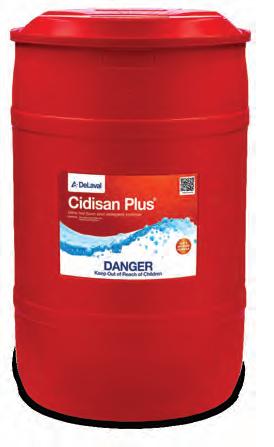
■ He says eating well was the next key step he took after getting fit to help him stay well.
■ Take time out “Time out with the family to do things you enjoy, and getting off the farm, is really important to relax,” says Brisco.
■ “Balancing commitments to the farm, family and yourself isn’t easy, and you have to keep working at it.”
■ Reframe how you see challenges Brisco says how we react and deal with challenges has a big impact on stress levels.
■ “Instead of getting angry when something doesn’t go the way I want it to, I think about what I want to achieve longer-term and then can break down how I want to get there.
■ That means you switch from thinking negatively to problemsolving and developing constructive ideas.”
■ It’s ok to say you’re not ok He encourages farm owners and managers to be open about the pressures they feel.
■ “Sharing how you’re feeling encourages other people in the farm team to speak up when they’re feeling stressed. That helps everyone better address issues when they come up.”
• For more tips on staying well, and to listen to Brisco’s podcast, visit www. dairynz.co.nz/wellbeing

– some sunny weather in the Waikato to help lift milk production.

That’s the view of AgFirst’s James Allen who told Dairy News that production in the Waikato and in many other parts of New Zealand is down on last year.


He says Canterbury is one region that’s in the same boat as the Waikato, but it appears that Southland is doing okay.
“What we have got going on in the Waikato is that we ended last season with pasture covers below target and cow condition was also marginally below. We then used up a fair bit of our supplement. Winter this season has been fairly wet and hard work and we are getting out the other side now, where things are okay, but generally production is behind last year,” he says.
An issue is supplement, and Allen says, because it’s been so wet, a lot hasn’t been made, which is delaying the planting of crops. He adds that there isn’t a lot of pasture available yet for silage and maize supplement supply on farms is low. Allen says farmers have just got enough grass and certainly no surplus.
“We need some hot sunny days to get things moving, so unless something dramatic happens in the next two or three weeks, we are in trouble, especially given that this is the money-making side of the season. If we are behind now, we are going to be behind for most of the season,” he says.
James Allen says, unless there’s a nice autumn and not a dry summer, milk production will be down on last season.

Meanwhile, on the West Coast, Fed Farmers
DAIRYNZ CHAIR Jim van der Poel says he believes that dairy farmers are still under a lot of pressure, hav ing come through Covid and a period where there have been significant staff shortages.
He says there are still a lot of farms having to run with insufficient staff and this adds to the stress.
and you are flat out just running the farm, and you know this stuff is coming at you and you don’t quite understand what it is and whether it’s going to undermine the viability of your farm, that is very worrying,” he says.

"Hassle-free travel for mature travellers’’

• FAR NORTH & BAY OF ISLANDS (4 spots available)
7 days, depart 17 September. A leisurely coach tour of the Far North including the new Hundertwasser Art Centre and day trip to Cape Reinga.
• EAST COAST & NAPIER (6 spots available)
8 days, depart 21 September. A unique and exciting tour around the East Cape and return via the Northern Explorer train
• CHATHAM ISLANDS DISCOVERY
8 days, depart 20 October. A special place for a safe and relaxing close-to-home all inclusive holiday.
• BEST OF THE SOUTH ISLAND
15 days, depart 22 November A spectacular trip around the many highlights of the South Island taking in the wonders of Tekapo, Twizel, Stewart Island day excursion, the Milford Sound and Queenstown. Overnight cruise on the Milford Sound.
• NEW PLYMOUTH 'CHRISTMAS LIGHTS'
5 days, depart 23 December. A Christmas get away featuring the magnificent light display at Pukekura Park along with some great sightseeing during the trip.
• WAIKIKI BEACH & HAWAII CRUISE
11 days, depart 25 May 2023 A 'Pride of America' cruise for 7 nights with a Waikiki highlights 3 day stop over including Pearl Harbor and Oahu round Island tour.
• TAHITI & SOCIETY ISLANDS CRUISE
10 days, depart 21 July 2023 Set sail on board Le Paul Gauguin for an unforgettable journey to discover idyllic sands and atolls. Tour includes flights to/from Papeete.
“When people run the businesses themselves, if they are short of staff, they just work harder and farmers are no different. Families on these farms work harder and this is unsustainable in the long run, especially with a raft of new regulations coming up.
“If you’re a family-run operation
Van der Poel says, despite the prospect of good commodity prices, the uncertainty of legislation, espe cially around the pricing of agricul tural emission is putting pressure on people.
“That’s why it’s so important that all the legislation is fair and equitable and people can understand it and realise that it makes sense,” he says.
president and local dairy farmer Bede O’Connor says milk production on the coast had its challenges in the first half of spring, but the second half seems to be going quite well. He says it was a wet winter and wet August, but since then, things have turned around and “it’s starting to feel like we are heading into a good October”.
“My understanding is that people are doing better than last year,” he says.
O’Connor says farmers have repaired most of the
damage to their farms caused by successive floods and pastures have been re-grassed. He says calving has gone really well and overall the mood of farmers is positive, helped along by the prospect of a good payout.
However, he says the only downside is rising costs, which affect things on farm but also hit other areas such as transport.
“When it comes to farming livestock, it’s not easy, but we work hard and do what we do well,” he says.

A RECENT trip to the Green Isle as a guest of Enterprise Ireland allowed Dairy News to take a closer look at Irish agriculture and a look at one of its lead ing educational and research centres.
Of a total land area of 6.9 million hectares, 4.5 million ha is dedicated to agricultural production and a fur ther 730,000ha to the forestry indus try. Eighty one percent or 3.63m ha are devoted to pasture, hay and grass, 11% is described as rough grazing, while 380,000ha or 8% is set aside for crop ping, horticulture and fruit growing.
The latest figures (2021) suggest that 163,000 people or 7.3% of the total workforce are employed in the agri-food sector, coming together to deliver export revenue of €15.2 billion ($26.1 million) or 6% of GDP. Since the abolition of European quotas in 2015, the national herd has risen from around 800,000 dairy cows to around 1.2 million in 2021, with total liquid pro duction rising from 6.4 billion litres to slightly more than 8 billion litres in 2019.
Looking at the dairy sector more closely, approximately 18,000 dairy farms milk around 1.6 million cows (as at June 2021) with an average herd size of just 90 cows. Like our own New Zealand production systems, Irish dairy farming is centred around milk from grass, with a growing season that appears to be extended from the early part of the calendar year by the warming effect of the North Atlantic Drift that moves across the Atlantic Ocean from the equatorial regions.
Great emphasis is placed on the quality of Irish milk with Bord Bia (the Irish Food Board), certifying a grass-fed standard quality award to herds that operate under a 95% grass fed regime

and an average of at least 240 days fed on pasture.
One feature of the Irish dairy industry is the Lyons Farm Complex at the University of Dublin.
Founded in 1854, the university sits in the top 1% of the universities in the world, while playing home to 33,460 students, and delivers 60 undergraduate programmes.
The UCD Lyons Farm Complex, situated 25km south-west of Dublin in County Kildare, is a state-ofthe-art facility that is structured to educate the next generation of agrifood and veterinary leaders. Working to strengthen the Irish agricultural and food industry, much of the work is centred around building strong partnerships on an open innovation platform.
Commercial partners include well known Irish companies such as Deve nish Nutrition, Dairy Master, Glanbia, The Munster Cattle Breeding Group, Enterprise Ireland and the European Union. Key areas of research include long term grassland research, soil fer tility, biodiversity, pasture resilience, and water quality. Of course, up-to-theminute environmental issues are also commanding attention such as carbon sequestration, greenhouse gas emis sions, food quality, Smart Ag, alongside
animal health and performance, all with an eye towards profitability.


The Lyons Farm herd is made up of 200 cows split into two main herds, Herd 1 (The Research Herd) with 140 cows with a split calving set up of 60 autumn and 60 spring calving animals. Herd 2 (The Systems Herd) is made up of 60 spring calving cows.

Much of the research is centred around incorporating recent advances in grassland management to deliver a high output system, while at the same time using dairy cows with good genetic indices for production and fertility, with an overall target of enhancing dairy production sustainability. The facility has been instrumental in developing



systems that change the typical Irish thinking of grass-based systems of low outputs per cow to one of high outputs and sustainability.
Typically, the former is based on good cost control, higher stocking rates and the aim of high profitability. By contrast, the latter system is now start ing to find favour as farmers tackle mul tiple problems, not least environmental concerns because of the increase in the national herd, fragmented operational sites because of land availability, lim ited infrastructure, limited labour and a poor work/life balance.
Lyons Farm has set itself a target of 3.27LU/ha over the milking platform, a yield of 7500-8000kg per cow and 625 kgMS per animal. From a feed perspective, the animals’ diet is made up of 51% grazed grass, 75% grazed grass and grass silage on a DM basis and 1,500kg of concentrate over 305 days.

FARMER CONFIDENCE could be headed up, according
to the latest Rabobank Rural Confidence Survey, but farm costs remain a worry.
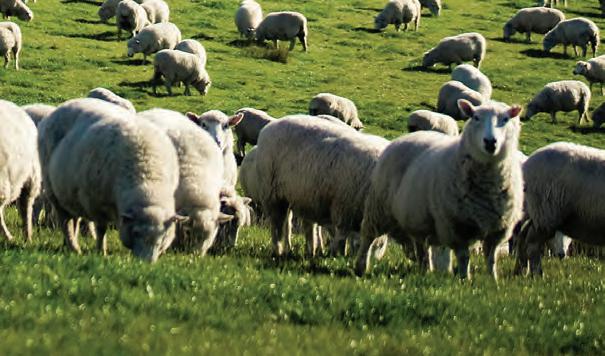
The survey, completed late last month, found
farmer confidence was slightly up on the previous quarter, climbing to -31% from -35% previously.
The minor lift follows
a plummet in the June quarter which saw sentiment drop to its lowest level since the beginning of the Covid-19 pandemic.
Rabobank New Zealand chief executive Todd Charteris says the small lift comes off the back of continued strong demand for New Zealand’s key

agricultural product from overseas markets.
“Increasing demand and rising commodity prices emerged as the major sources of optimism identified by farmers with a positive outlook,” he says.
Charteris adds that farmers will be pleased to see demand and prices for their products holding up in spite of the economic challenges facing the global economy.

He says that while commodity prices are staying strong, pessimism remains the dominant sentiment among New Zealand farmers.
“The number of farmers holding a negative outlook on the prospects for the agri economy outweighs those with a positive view by more than three to one, and farm input costs continue to be the major reason for this,” Charteris says.
Last quarter, the survey saw the highest level of concern ever expressed in relation to input costs, Charteris says, and that number has risen.
Seventy one percent of farmers with a pessimistic outlook now name rising farm input costs as a reason for apprehension, he says.
The rise in input costs was reflected in the most recent farm expenses price index, which had a 4.8% rise according to Stats NZ.
Stats NZ business prices delivery manager James Mitchell says farm expenses were at the highest level Stats NZ has measured since the index started in 1993.
“On average, for all farm types, expenses were 13.4 percent higher in the June 2022 quarter than they were in the June 2021 quarter,” he says.
Charteris says the rise in farm inputs and its contribution to the feeling of pessimism among farmers comes as no surprise given that prices for fertiliser, fuel and feed have risen since Russia’s invasion of Ukraine in February this year.
“And with the recent decline in the Kiwi dollar against the greenback now starting to flow through to further price increases for imported farm inputs, farmers continue to see input prices as the biggest threat to the agri economy in year ahead,” he says.
The survey also found government policy to be the second most prominent concern for New Zealand farmers.
The survey also found farmers’ investment intentions were marginally lower than in the previous quarter with 18% of those surveyed now expecting to increase investment over the next year and 19% planning to decrease investment.
“Across all farm types, less than one in five farmers is looking to decrease investment on the prior year, and this illustrates that despite the short-term challenges facing the industry, farmers are broadly positive about the longer-term outlook for the sector and, as a result, are prepared to continue investing in their operations,” Charteris says.

FONTERRA’S DEPARTING chief financial officer Marc Rivers says delivering the co-op’s annual results for the final time made for an emotional day.
There were mixed feelings: proud to be delivering a great result and sad that he will miss out on the next chapter in the co-op’s journey.
Rivers, who stepped down from the role on September 30, will bid farewell to Fonterra’s farmer shareholders at the co-op’s annual meeting in Rotorua next month.
Rivers joined Fonterra in 2018, the year in which the co-op posted its first financial loss.
“I know from my direct interaction with global customers like Nestle. They really admire what the NZ farmer has done, in a quite entrepreneurial way and on their own.”
it – that’s what it’s all about,” he told Dairy News.
He agrees that turning the co-operative around was quite a journey.
“Where we started, the difficulties we faced at the beginning, and then to see the first fruits of the new strategy and direction emerge,” he says.
Rivers believes the co-operative is on the cusp of a new and exciting chapter.
“The next chapter is really bright and will be exciting for Fonterra. I guess I will be cheering from the sidelines.”
as many countries as they are able to from a trade perspective.
Rivers says customers admire the technology and innovation achieved by Fonterra on proteins and products like mozzarella cheese.
The co-op’s ability to deliver products to global customers during the pandemic was also much appreciated.
“Our supply chain reliability through a very disruptive period enhanced our reputation. Kotahi has been very valuable.”
Rivers believes Fonterra’s optimised manufacturing footprint, allowing it to divert milk into anything it needs to and respond to customer signals, was also highly valued.

Also setting Fonterra apart from other dairy producers is its sustainability story.
“We produce milk in a beautiful way. Our grass- based system is the lowest carbon way of producing that form of nutrition.
“That doesn’t mean that we stand still, we have to keep getting better at that.”
NEW ZEALAND Young Farmers (NZYF) has an alumni network.
It will provide former Young Farmers members with the opportunity to stay connected with the organisation.
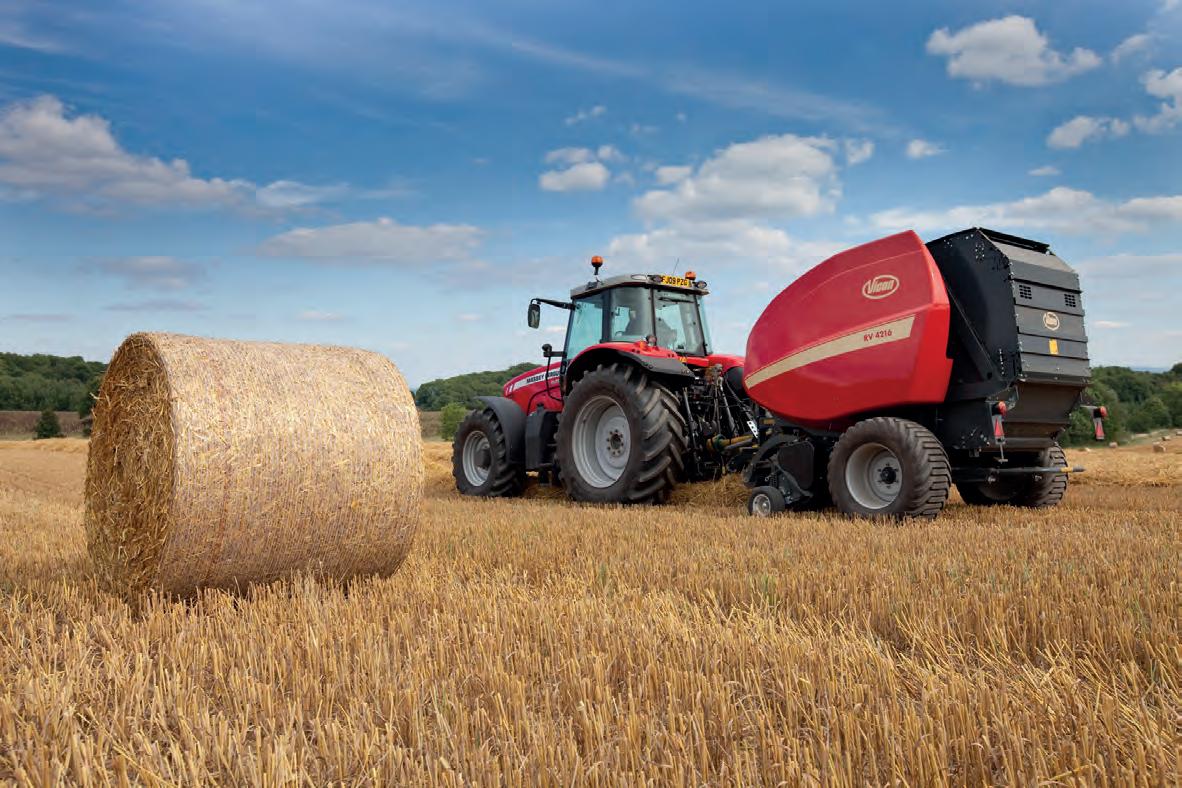
The network will also offer past members a channel for offering up their expertise and support, contributing to NZYFs goal of becoming a sustainable organisation.
NZYF chief executive, Lynda Coppersmith, is excited to have the network formalised.
“New Zealand Young Farmers has been a part of the food and fibre sector since 1927 so we know there are hundreds of ex-members out there doing amazing things,” she says.
“We’re excited to now have the opportunity to stay connected and give our Alumni a network to share their knowledge and offer support for the organisation, on a local, regional and national level.”
A group of former members who are proudly dedicated to the organisation and its community have been supporting NZYF in developing the network.
Kate Taylor, advisory group member, NZYF alumna and author of ‘50 Years Young: A History of the Young Farmer of the Year’, is excited for ex-NZYF members to be able to stay connected to the organisation, to one another, and have the opportunity to pass down their knowledge and support to the next generation.
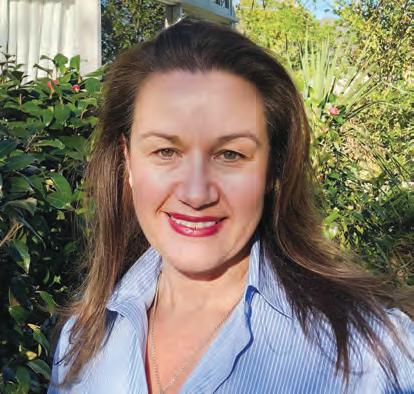
With Rivers at his side, then interim chief executive Miles Hurrell announced a major review of overseas assets and partnerships.
The co-op decided to focus on extracting value rather than pursue volume and put the focus back on its New Zealand milk pool. Two years later the co-op was back in the black. Last month the co-op announced a net profit of $583 million for the last financial year, on the back of revenues totalling $23.4 billion.
Rivers says he is proud of the results.
“It makes all the blood, sweat and tears of the last five years worth
Rivers believes that, after the 2018 results, it was clear that Fonterra had to change and everyone could see that.
As the CFO, Rivers had direct interactions with key customers from the around the globe.
He confirms that the co-operative has a great reputation overseas.
“I know from my direct interaction with global customers like Nestle. They really admire what the NZ farmer has done, in a quite entrepreneurial way and on their own.
“They have built up an amazing industry.”
Fonterra is also one of the world’s biggest exporters of dairy products, reaching out to
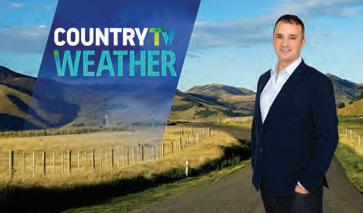
NICHE dairy producer

Canary Foods has been bought by Westland Milk Products.
Canary has developed a world-first compostable, individually sized butter squeeze pack in response to consumer demands for ethically responsible packaging and global calls for an end to single-use plastics.
Canary Foods executive director and shareholder James Gray says the acquisition by Westland would give the Waikato-based dairy manufacturer more opportunities for expansion and access to
global markets.
“Canary grew off the back of taking outstanding New Zealand dairy products to the world by catering for the airline and hospitality industries,’’ Gray says.
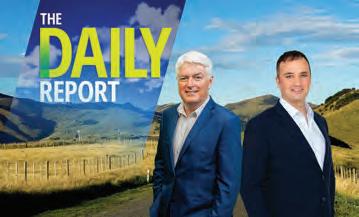
“We used the Covid pandemic as an opportunity to reassess our strategy and now, after record sales last year and with international travel and the hospitality sector set to take off, we are already in a strong position as these markets continue to bounce back.’’
Westland chief executive Richard Wyeth says the purchase of

Canary Foods would merge New Zealand’s rich West Coast dairy heritage with an innovative business that has already spread its wings to international markets.

“Canary is a fantastic fit for our business because it is so obviously based on a strong understanding of what our customers want and need,’’ Wyeth says.
“Their commitment to innovation, sustainability and quality in pursuit of consumer demands are values we very much admire and uphold.
“After our $40 million investment in doubling our consumer
butter manufacturing capacity at Hokitika, this extends our longterm commitment to add value to Westland’s butter portfolio by playing a greater role in the expanding global consumer butter and spread market.
“Westland continues




to go from strength to strength under our parent company Yili. Yili’s investment has
to getting behind this culture of innovation even further,’’ Wyeth says.
a highly skilled and dedicated workforce who we know will continue to thrive under Westland’s ownership. Their hard work and dedication has been key to much of Canary’s success.’’
helped us turn our performance across the entire company around and we’re now in a very strong position to capitalise on that.’’
Wyeth says Canary’s butter squeeze pack is a great example of a New Zealand company leading the world in research and development.
“We look forward
“We are very excited about the opportunity of joining with Canary and providing more jobs and opportunities for our sector.’’
Canary Chairman and shareholder Jeremy Curragh said the relationship with Westland parent company Yili would give the company even greater access to international markets.
“Being part of a wider group that shares our commitment to sustainability and innovation is incredibly exciting,’’ Curragh says.
“We’re extremely proud of the extensive international distribution networks we have managed to establish over the past 21 years.
“We have long and loyal customers and







Canary Foods exports 755 of the dairy products it manufactures for a range of applications. Established in 2001it produces reworked premium butter and cheese-based products such as butter sheets and medallions.
Canary’s 100% New Zealand dairy products are supplied to a diverse range of businesses in the retail and food service sectors, including supermarkets, airlines, restaurants and bakery outlets.
Under the deal,
Canary Foods will become a subsidiary of Westland Milk Products, retaining its own brands and thirdparty manufacturing agreements.

Canary will continue to develop and expand its portfolio of Canarybranded products as well as working as a thirdparty manufacturer for other New Zealand brands.

“Canary is a fantastic fit for our business because it is so obviously based on a strong understanding of what our customers want and need.”
which is a pre-condition and the founda tion for calculating the individual farm er’s incentive.
Arla says, from next year, the milk price paid to farmer suppliers will be linked to environmental sustainability.
Two years after implementing a com prehensive ‘Climate Check’ on 8,000 farms across seven European coun tries, Arla farmers are taking another significant step to be at the forefront of environmentally sustainable dairy, the co-op says.
Arla is introducing a point-based Sus tainability Incentive model, building on data from the Climate Check, to reward current and future sustainability activi ties on farm.
Arla directors are putting 3 eurocent/ kg of milk on the table annually to fund and motivate environmental improve ments on 19 levers. The full incentive package includes the one eurocent that farmers will receive for submitting their Climate Check data. In the first full year,
at least 270 million euro is expected to be distributed through the monthly milk price based on what the farmers are doing on 19 levers in the model.

Arla chairman Jan Toft Nørgaard says the Sustainability Incentive model is a historical milestone in Arla’s transition to more sustainable dairy.
“We are introducing an advanced and ambitious sustainability incentive, which is a fundamental change to our milk price model.
“Going forward, the milk price Arla
farmers will receive for their milk will not only depend on fat, protein and quality, it will also depend on their activ ities on sustainability.
“The support from our members, even in a time of great uncertainty, is a testament to our commitment to be at the forefront of progressive dairy farm ing and set the standard for how to push our whole sector forward.”
The three eurocent comes on top of the one eurocent that farmers receive for submitting their Climate Check data,
Based on Arla’s current owner milk volume, the four eurocents per kilo of milk amounts to an annual 500 million euro that Arla’s board of directors are willing to take from Arla’s milk price and re-distribute to the farmers based on their individual points in the Sustain ability Incentive model.
With the current milk price, it cor responds to about 7% of the milk price, the co-op says.
Arla chief executive Peder Tuborgh believes the Sustainability Incentive will be an effective tool for driving further improvements.
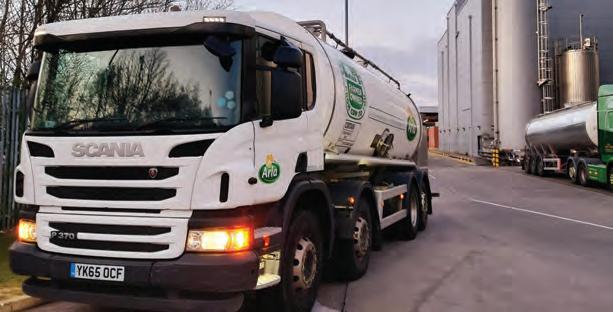
“Arla has some of the most climateefficient farmers in the world, how ever, they also recognise that they need to accelerate their efforts to be at the forefront of environmentally sustain able dairy.
“With this historical step, we will stand stronger in the market and send
a clear message to our customers and consumers that the necessary change comes at a price for our owners and that a fair amount of the money you pay for Arla products is directed to the farmers who take the most action.”
The model is a point-based system, in which the farmers can collect points based on their activities on the model’s 19 different levers like feed, protein and fertiliser efficiency, manure delivery to biogas, biodiversity, carbon farming and use of renewable electricity and defor estation free soy.
Eighty points will be available from the start in 2023 and a further 20 points for new levers are expected to be built into the model within a few years, lead ing to a total of 100 points. For each point that the farmers are able to achieve, they will receive 0.03 eurocent per kilo of milk. Activities with bigger improvement potential for climate and nature will lead to the most points –and therefore also the biggest financial incentive.
IF THE recent bloodbath the left suffered in the local election lurch to the right wasn’t a clear enough sign that Labour are out of touch with the electorate, then the Government’s farm emissions policy an nouncement is surely the final proof.
Determined to hobble the one industry that propped the economy up during recent trying times, Jacinda Ardern and James Shaw ignored the farmlevel option put to them by industry representatives (in the form of the tepid He Waka Eke Noa propos al). What they’ve come up looks like a virtue signalling exercise, designed to make the PM look good on the world stage, while throw ing farmers under the bus.
The Feds aren’t happy, and even the ‘we must be at the table’ mob at DairyNZ and Beef + Lamb expressed concerns at what the Government has settled on.
Farmers will be hit hard by this, and must now be wondering if their repre sentatives got it wrong in this negotiation: is there any point being at the table, playing nice, if the other party isn’t listening?
TALKBACK RADIO was just one forum running hot with angry takes on the decision to tax farmers for livestock farts last week. The anger, and support for farmers, went much wider than rural communities.
A townie mate of Milking It, well known in the Auckland hospitality scene, summed up the re cent government decision on farm emissions nicely, saying, “So the govern ment thought it was ok to destroy hospo & tourism by drastically reducing labour supply, now they’re destroying the rural sector. Who exactly do they think is going to re-elect them?
There’s only so many me dia sycophants and state servants out there!”
As for the PM’s brag that their fart tax is a ‘world first’, another mate opined, “It’s a world first because no other govern ment has been stupid enough, yet”.
And lastly, from a Southland farmer, “Now, what did that Paris Accord say again?”

It said, reduce emis sions but not at the ex pense of food production.

PRIME MINISTER Jacinda Ardern used a hale bay for a podium while announc ing the latest consulta tion documents on the Government’s emissions policy.
After one mainstream journalist described it as “possibly the most Kiwi thing I’ve ever seen”, twit ter users didn’t hold back.
One questioned how is that NZ mainstream media think the set up was accidental.
Another claimed the PM was good at PR stunts: ”Just look what happened when she wore a headscarf after the Christchurch attack.
Mother Teresa to the world!”
The mood was summed up pretty well by this tweet: “A hay bale at a farm shed will be a very rare thing to see soon with the kind of crap Ardern is dumping on our nation’s main earners for this country’s economy.”
ANIMAL RIGHTS group

SAFE thinks skinny cows are unacceptable on a farm.
After two unsuccessful attempts to report farmers for allegedly carrying “thin” cows on farm, the group is now calling for the ap pointment of a Commis sioner for Animals.
SAFE is unhappy with what its calls Ministry for Primary Industries’ (MPI) lacklustre response to im ages of thin to emaciated cows, taken on two sepa rate farms in recent weeks.
In both cases, images were passed on to MPI and in both cases inspectors visited the farm and found no offences and said the farms had sufficient sup plies of supplementary feed on hand.
Just shows how much SAFE understands about farming and management of animals.
THE AGRICULTURE sector has long asked for certainty around what the Government might finally determine on how agricultural emissions will be treated and that is seemingly just weeks away.
We now have a ‘consultation’ document and most know what the word ‘consultation’ actually means. Essentially it means prove us wrong and come up with a much better idea that is politically and practically acceptable.
No one – the wild greens or the rabid rural types – will be completely happy with the 94-page document because, in the end, the decision about what to do is a political one and as with most such documents, if everyone is unhappy, then the government or the writer will probably be happy because everyone is a both a winner and a loser to some degree.
Most unhappy with this proposal will be dry stock farmers who for some incomprehensible reason are the hardest hit – even though they are lowest emitters. The logic is bewildering and Beef + Lamb New Zealand is rightly very concerned. For dairy farmers there are more options.
Just a week ago the Parliamentary Commissioner for the Environment Simon Upton stated very clearly and correctly that NZ cannot plant its way out of dealing with ag emissions. Federated Farmers say the proposal outlined in the consultation document will “rip the guts out of small town NZ” – the assumption being that good productive land will end up under pine trees. It’s not just the trees, it’s the long term effects and pressure these have on roading infrastructure and the environment. Ask the people of East Coast NZ what they think!
Regardless of the rhetoric that has greeted the report, there will be those farming leaders who will say it could have been worse. If Government had its initial wicked way, agriculture would be in the ETS. In some ways it’s a victory of sorts for He Waka Eke Noa (HWEN) – the consortium of agricultural groups who came up with a plan to counter the Government’s initial crazy one. Agriculture Minister Damien O’Connor argues that most of the proposals in HWEN are in the report. The key word is ‘most’, and it’ll be interesting to see whether the submissions to the Government’s ‘consultation’ proposal result in any significant changes. Interestingly, the National Party is being pretty coy on the issue – a bob each way you might say – on the one hand supporting the overall emissions targets, but then expressing its concern about the way the Government is planning to price emissions.
In the end most, if not all the protagonists should prepare to be unhappy with the final outcome – that’s life these days!
– Peter BurkeLAST WEEK’S proposals from the Government will not come as a surprise to those who have been following this topic. The changes to recommendations initially put forward by He Waka Eke Noa are largely aligned with the Climate Change Commission (CCC) recommendations.
The Government proposal is less favourable to agriculture than the proposal initially put forward by He Waka Eke Noa as it provides less certainty for emissions price levels, it does not allow for the industry to be directly involved with the process to recommend emissions pricing to Government, and rewards less on-farm sequestration.
The methane price is very dependent on how quickly emissions can be collectively reduced by the agricultural industry.

Unfortunately, this does not provide individual agricultural businesses with much certainty as to what their future liabilities will be.
If emissions are quickly reduced, the price will not need to be ratcheted up.

It is clear the proposal is less favourable for our sheep and beef farms. This sector tends to generate greater methane emissions relative to the value of the production than the dairy industry and the level of profitability in this industry tends to be lower.
The sheep and beef sector stood to gain the most from the proposal to reward a wider range of on-farm vegetation as these farms tend to have unproductive areas, such as gullies, which could be planted in trees.
These factors, combined with the high carbon price, will continue to incentivise land-use change towards planting trees that can generate carbon credits, particularly pine trees.
Unfortunately, we are yet to see any policies that encourage small areas of land to be planted in trees, which could help to keep the more productive parts of farms producing food and fibre.
The Government proposal for pricing of agricultural emissions is now due to be approved by Ministers in early 2023, rather than late 2022 as initially proposed. The Government has also put in place back-up measures should the systems to price emissions at the farm level not be ready by 2025.
This involves pricing emissions at the processor level, which again is likely to be less favourable for the sheep and beef sector.
A blanket reduction in farmgate prices is likely to occur, which would do little to incentivise changes in on-farm practices.

Pricing emissions at the processor level is expected to have a greater impact on both farm profitability and land-use change than pricing emissions at the farm level. Under a processor level levy there is expected to be a 20% decrease in land used for sheep and beef farming, and up to a 5.7% decrease in land used for dairying according to the modelling by MPI.
Government modelling indicates there will be significant decreases in agricultural production. Depending on the scenario, the decreases expected could be as great as 9.8% for milksolids, 23.6% for lamb and 65.4% for beef.
The arable, horticulture and forestry sectors are expected to benefit from the proposals due to land-use change.
In summary, the Government proposal was largely as expected. There will be significant change in our primary sectors as the impacts of pricing agricultural emissions are taken into consideration.
Dairy and meat production will decrease, but this will provide some

opportunity to increase the average value of these goods. Production of horticultural goods and arable goods is expected to increase, but this
will require significant additional investment.
Susan Kilsby is agricultural economist• Article first appeared in ANZ Agri Insight.
A LIVE yeast product used on farms through a patented system is said to be increasing milk production, improving herd fertility, and reducing the amount of effluent produced.
Animal health and feed additive company RCI has installed its Suredose system on 12 farms in the South Island and is collecting data for research into the effectiveness of the Vistacell yeast when delivered using Suredose.
Suredose uses compressed air from a rotary cow shed system to deliver the Vistacell yeast to cows at the optimal dose in their feed as they enter a rotary shed.
The patented technology has been in Beta testing since 2019 and RCI will soon have data from over one million doses given to 16,000 cows in the New Zealand group.
“Live yeasts are well known for improving a cow’s rumen function, but we know it needs to be given in specific doses to be effective. There have been no data studies to show the value farmers get from the products which is why we have developed this system,” says Brett Ruth, managing director RCI.

Suredose allows farmers to capture data




from their milk metres to show how their herds are performing using the Vistacell yeast.
Farmers using the product report significant results, the company claims.
It says John Wyatt, a contract milker for Premier Dairies in Southland, has used the Suredose system since November 2021 on 1,000 cows.
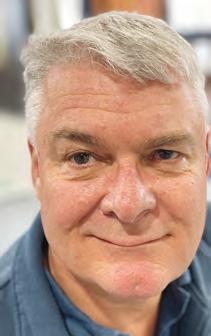
Since using the Vistacell yeast in his 50-bale rotary shed through the Suredose system his production has increased 6% this year and his six-week in-calf rate has improved by 4%.
“Our cows’ body condition scores have improved, we calved earlier, and our milk production is up on last year to date,” says Wyatt. His herd had produced 57,812 kgMS by this time last season and has increased to 61,300 kgMS to date this season. He
also noticed his effluent pond is not crusting over like it normally would.
“It suggests to me the yeast is getting into the cow’s rumen creating a more efficient animal, whether that’s more milk, better body condition or getting in calf quicker,” says Wyatt.
“As a contract milker, more days in milk equals
better returns and we saw our six-week in-calf rate improve last season after using Vistacell,” he says.
Donald Smith has used Vistacell in the Suredose system on his herd of 640 cows in Canterbury and says his empty rate has improved from 12.55 to 10%.
“The herd is in much better condition, and

the cows are much more content. I think the yeast is helping them use the feed we’re giving them more efficiently,” says Smith.
RCI will demonstrate the Suredose system and share research trial results at upcoming South Island Fieldays and at the National Fieldays at Mystery Creek in
November.
The Suredose system, which works in rotary sheds, will be installed on their farms but remains owned by RCI.

“With increasing feed costs and environmental regulations, farmers need mitigation solutions, and they want to be sure they’re getting the most out of their feed.
Our testing shows the Suredose system is delivering both,” says Ruth.
“This system has potential to help address many of the challenges coming at dairy farmers and we’re keen to work with more New Zealand farmers to help them gain the benefits from this system.”



DONAGHYS ARE passing on advice for spray contractors who will be applying its patented formula N-Boost on dairy pastures this season.
With the price of nitrogen fertil iser at historic highs, the company says that more dairy farmers have been turning to liquid application of urea with N-Boost to realise poten tial cost savings and maximise pas ture production.
N-Boost is a patented formulation that contains adenine compounds and amino acids. It is added to dissolved urea and foliar sprayed onto pasture and crops.
For farmers and contractors this can be a mindset-shift from apply ing solid fertiliser, and there are some rules of thumb to ensure it is applied for optimal results, according to Donaghy’s general manager crop protection and export, Tim O’Sullivan.
“Since we ran our farmer field days in Autumn on our demonstra tion farms in the Waikato, Canterbury and Southland we have been meeting with rural spray contractors due to the

lift in enquiries for N-Boost,” he says.
“We had over 200 farmers, farm advisors, rural bankers and spray con tractors attend these events. It was of interest to spray contractors who want to keep up to speed with sustainable solutions for how dairy farmers are farming under nitrogen cap regula tions.”
The N-Boost System, designed for

application on pasture, is 40 kg/ha of urea dissolved in water with 3 L/ha of N-Boost, typically sprayed at 200 L/ha. Urea is easily dissolved in water in an N-Boost Mixing Station or by agitat ing in a spray tank.

“Farmers are generally employing contractors to apply N-Boost across the grazing platform, in spring, and autumn.
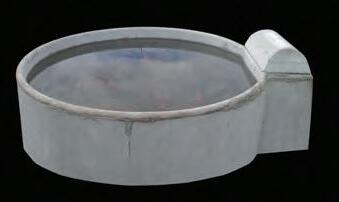
“For a spray contractor this makes it a good block of continuous work for a spray unit. You’re on one site spray ing an easy to mix and apply product.”

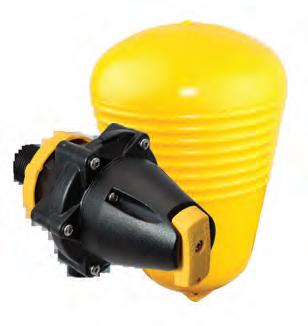
O’Sullivan says the system relies on timing of application.
“The application system differs from traditional applications of solid urea, where you can follow the round directly after the cows, and the urea can sit on the soil surface until it’s watered in.
OSPRI’S NEW more rigorous five-step process has produced its first ser vice provider to achieve NAIT accreditation.
CRV was presented with its accreditation certificate in Hamilton recently.
In order to gain NAIT accreditation, appli cants go through rigorous screening, including the completion of a number of education modules and audit assessments.
OSPRI national man ager quality, compliance and assurance Melissa
Bailey says the inten tion of the new voluntary accreditation system is to give farmers more confi dence that organisations handling and managing their NAIT data, such as saleyards and meat pro cessors, meet the highest industry-agreed stan dards.
Under the old system, more than 150 providers were accredited. Farmers were getting notices for not complying and there were some instances where the movements were recorded incor
rectly.
“Using a provider who has been accredited under the new system gives farmers peace of mind that the registra tion and movement of their animals are being recorded in an accurate and timely manner,” says Bailey.
“Being able to trust a third-party provider with this responsibility not only protects farmers’ businesses from disease and biosecurity threats, but it also helps them avoid penalties for non-
compliance.”
Bailey says farmers using an accredited NAIT provider mean that the organisation is backed by OSPRI.
“If anything goes wrong, OSPRI can pro vide help and support to remedy the situation. Even after these provid ers become accredited, our team works closely with them to monitor their performance regu larly and make sure they do the job right every time.”
As the first entity to

achieve NAIT accredita tion under the new stan dards, Bailey says CRV is leading the way and she hopes it will encourage others to join the pro gramme.
“There are already a number of other provid ers in the pipeline whose teams are about to finish their training modules and become accredited.”
CRV myHERD prod uct manager Andrew Fraser says the decision to become NAIT accred ited means CRV can continue to help dairy
“N-Boost acts as a stimulant for the plant to enhance its ability to utilise all plant available N in liquid urea. Rely ing on leaf area coverage by conven tional sprayer application, you don’t want to apply right after grazing – you want the grass to have recovered and be growing so it can take on that N.” Tim says it can also be applied with a number of other liquid chemicals including commonly used herbicides, fungicides and pesticides.
farmers meet their obli gations and protect their farm businesses.
“Having an effective animal traceability system is like having car or house insurance, you don’t know when you’ll need it, but when you do, you’re very happy you’ve got it,” says Fraser.
“Farmers can have confidence the CRV team can help them resolve their NAIT queries in myHERD and ensure they remain compliant.
“For example, if they purchase an animal and
discover it’s never been registered with NAIT, or a calf’s EID tag doesn’t exist in the system, we can then work with the farmer to get to the bottom of the problem and fix it.
“We are proud to be the first provider to become accredited under the new system. While the training modules are comprehensive and the process is thorough, it highlighted that we already have robust qual ity processes and proce dures in place.
 BALA TIKKISETTY
BALA TIKKISETTY

DECLINE IN soil physical properties takes considerable expense and many years to correct, and can increase the risk of soil erosion by water or wind.
So safeguarding the soil for present and future generations is a key task of land managers.
Practices that damage soil include over-cultivation, under or overfertilisation, decreased or increased water abstraction, indiscriminate use of pesticides and other agrichemicals, clearing natural vegetation, intensive farming practices, and very importantly, failure to maintain soil organic matter levels.
Average soil carbon stocks in New Zealand’s agricultural soils estimated at about 100 tonnes per hectare in the top 30cm, any change in soil carbon could make a significant contribution to carbon footprints at national, industry and farm scales.
Farmers face a new environmental issue, with recent research showing some dairy soils are losing more carbon and nitrogen than dry stock and hill country areas. Dairy farms on nonallophanic soils have lost an average of one tonne of soil carbon per hectare a year in some parts of the country.
Biologically active carbon is the most important part of the soil carbon and how it is distributed through the soil profile is equally important. Soil carbon is found primarily in organic forms, which make up soil organic matter.
A number of international agreements and conventions are likely to influence the management of soils in the near future.
If agricultural soils were to be used as carbon sinks, there would be a greater need and responsibility by farmers and land managers to increase
the soil organic carbon content of their soils.
Soil carbon is mostly found in the decomposed remains of plant and animal matter and in soil microbes. Soil carbon shouldn’t be confused with soil organic matter. About 40-50 per cent of soil organic matter is soil carbon by weight.
In order to achieve increases in soil carbon content, it would be necessary

to achieve the maximum uptake of various land management practices that contribute to soil sustainability.
The Waikato region has a wide range of soils, including some of New Zealand’s most productive. However, even high quality soils can be degraded through some land use practices. The Waikato Soil Quality monitoring in 2020/21 indicated only 19 per cent of monitored sites fully met all seven

targets, while 25 per cent of productive land met all seven targets. Compaction and excessive fertility are the main soil quality issues in the intensively farmed areas.
The development of sustainable soil management practices clearly requires a multidisciplinary approach to find the best solutions. As we look for those answers, it will be the wise farmer who keeps an eye on these issues given their ability to influence the bottom line.
There are various tools that are available to farmers and land managers to allow them to assess the physical/ nutrient state of their own soils.
A technique called visual soil assessment (VSA), developed by wellknown soil scientist Graham Shepherd, has become popular. It involves soil structure in top soil being visually assessed and scored by comparing it with a pictorial description of structural condition.
VSA has been a good tool in assessing soil quality at farmer level and the results are easy to interpret and understand.
VSA also provides a useful educational and vocational training tool for those unfamiliar with soil science. It creates a better understanding
of soil quality and its fundamental importance to sustainable resource and environmental management. In particular, VSA has developed a greater awareness of the importance of soil physical properties (such as soil aeration) in governing soil quality and on-farm production.
The VSA package has been recently updated by adding some more important indicators. The second edition of the VSA is a significant improvement on the first edition, partly because it is better able to assess soil condition and plant performance as a result of a more balanced assessment of soil chemical, biological as well as physical properties. It is more strongly correlated to crop and pasture production and pasture quality, considers key aspects of the subsoil and better addresses the ecological footprint of organic carbon dynamics and environmental issues, including greenhouse gas emissions and nutrient loading (such as nitrogen and phosphorus) into waterways.
• VSA will be demonstrated at a field day to be held on Wednesday, 19 October near Te Awamutu. Please visit waikatoregion. govt.nz/public-events for the details and to RSVP.

turned to CRV’s Hereford Fertabull,” says Helen.
“It has been great for our fertility. We know the cows are going to get in calf and they are easy calving animals. We’ve had great results.
“The Angus cross
Jersey AI calves, the white-faced Hereford Fertabull calves and the naturally mated calves using Angus bulls.”
The Fertabull Hereford calves are also giving the McLaren’s a high value dairy beef product. The calves are grown through to 100kg before Christmas
“We got $550 per bull
and $500 per heifer last season so we are breeding valuable dairy beef calves that provide us with alternative income stream,” says Helen.
Koot says an increasing number of dairy farmers are recognising the added value of dairy beef calves and they are using a range of breeds to appeal to the beef market.
RESEARCH HAS found that having semen from three bulls in one straw can increase dairy farmers’ average 56-day Non-Return Rate (NRR) by 4.2%.
The research was carried out in The Netherlands by CRV in partnership with the Belgian Blue Group. Initial trial results are based on NRR data from over 1,000 inseminations using CRV Fertabull Belgian Blue.

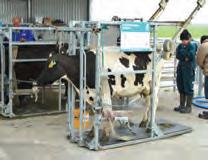

For every 100 inseminations, at least four more cows will get in calf using CRV’s Fertabull when compared with average conventional straws.
Fertabull straws contain semen from multiple sires, lengthening the life of the semen in the straws and giving cows a greater chance to get in calf.
CRV genetics product manager (NZ Market)






Mitchell Koot says the research findings are good news for dairy farmers looking to tighten up
calving patterns, reduce bobby calf numbers and breed higher-value dairy beef calves from their lowest genetic merit cows.
“This large-scale trial backs up the results that CRV’s New Zealand farmers have been experiencing since the introduction of CRV Fertabull more than 20 years ago,” he says.

“Our Fertabull Dairy beef options give dairy farmers the opportunity to maximise their mating performance, resulting in more days in milk and greater revenue.”
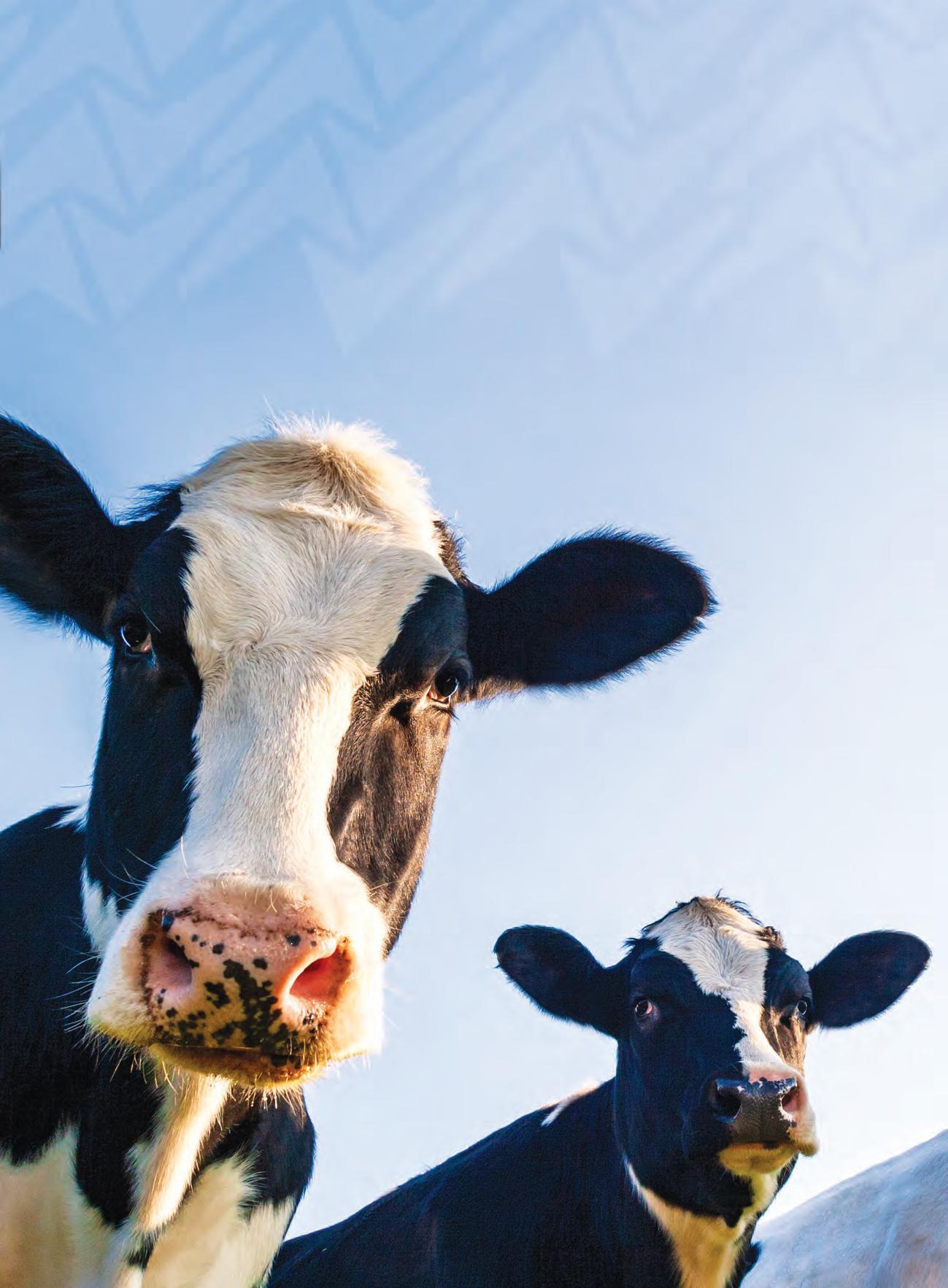
The trial compared the NRRs of herds when inseminated with a single Belgian Blue bull, and when they were inseminated using CRV’s Fertabull Belgian Blue straws, containing semen
from three different Belgian Blue sires. The trial used 2,800 straws of CRV Fertabull Belgian Blue.
“Sperm cells remain viable for a limited period after insemination,” explains Koot.
“However, the length of this period varies from bull to bull. As a result, there is variation between bulls in the availability of viable sperm cells at different times in the cow’s fertility cycle. Therefore, mixing semen from different bulls increases the chance that sufficient sperm cells will be available at the right time for fertilisation. This increases the chance of pregnancy.”
Murchison dairy farmers Helen and Peter McLaren use CRV’s
Fertabull to drive their in-calf rates and breed high value dairy beef.

The couple milks 220 cows on their 90-hectare property producing an average of 400 kgMS/ cow. They have been CRV customers since 2007 and have used CRV Fertabull since 2014.
They use CRV’s Hereford Fertabull straws at the tail end of a six-week artificial insemination (AI) period. They use CRV Jersey sires across most of their mainly Friesian herd. Any cows not in calf at the end of AI are then naturally mated using Angus bulls.
In the 2021/22 season, the McLaren’s used 15 CRV Hereford Fertabull straws and got 15 white faced Hereford calves.
“We wanted a definite cut off between the main Jersey artificial insemination run and when the balance of the herd goes for natural mating where we use Angus bulls. So, we
“This large-scale trial backs up the results that CRV’s New Zealand farmers have been experiencing since the introduction of CRV Fertabull more than 20 years ago.”CRV genetics product manager (NZ
Friesians has made itself a new home in Southland, with fourth generation dairy farmer Dylan Lynch and fiancée Natasha Maybee standing capably at the helm.

First established in 1950 by Dylan’s greatgrandfather James Lynch, a WWII returned soldier, the rehab block of land in the Thames Valley became synonymous with a pedigree herd of the highest quality.
In 1950, James purchased some pedigree animals from the Arataki Stud in Te Awamutu and in 1955, eight yearling heifers from Carreys Bros dispersal sale at Thames.
Roseview Echo Champion featured strongly in the herd’s breeding, and the herd’s well-known Gail family was established with the purchase of Ariki Pietje Champion who was
bred through Pukeroro Champion Pietje.
Over time Dylan’s grandparents Michael and Moya Lynch took over the farm, taking the stud to the next level; a number of Lyncrest bulls have been entered and proven in the sire teams of LIC and CRV.
“I went down to the South Island with the expectation of staying for ‘a year or so’, but seven years later I’m still here, with no plans to leave.”
Natasha was brought up on a sheep and beef farm on the coast at Milton, near Dunedin.
“I dragged her into
Fast forward two generations: Dylan grew up in the Waikato and after school he went straight into farming with the exception of around 18 months working for a local contractor.
“A lot of my friends went on an OE, but I wanted to stay in New Zealand and continue hunting and living an outdoor lifestyle,” he says.
THE 2021/22 SEASON was the first in which Dylan Lynch and Natasha Maybee used sexed semen on the top 10% of the herd; cows that had a premating heat and the top cows in the herd got one straw of sexed semen in the first three weeks of mating.
“This mating we are going to go heavy on the sexed semen now that we know it was successful in the herd,” Dylan says. “Most likely the top two thirds of the herd will get sexed semen this year.”
They rear 100 replacements annually.
When breeding, Dylan and Natasha are “super fussy” on udder scores because of the production they are pushing through the cows.
“We focus on components over volume, choosing bulls with good components and at least medium milk volume,” Dylan says.
This season, a large portion of the herd was in calf to Meander Shot Alibi-ET S3F. They currently have 21 pedigree animals in the herd, and two thirds are from overseas genetics; of those, eight or nine are sired by Plain-Knoll King Royal-ET.
“I don’t think there’s one cow from King Royal I don’t like,” Dylan says. “The top King Royal heifers are producing what a mature cow can.”
Dylan says there is one 10-year-old cow in the herd that is outstanding for produc tion and type - Lyncrest Fever Bridie EX, who has excellent components of fat 5.23% and protein 4.26%. Bridie produced 842kgMS last season, with her lactation finishing in February 2022.
dairying,” Dylan says. “But she’s well and truly into it now.”
Dylan and Natasha have two children, Jackson and Reuben. The couple worked for Owen and Cathy Copinga, managing Rivendell Farm, which Dylan says was a fantastic place to learn. They then went contract milking, before sharemilking for the first
Dylan says the Holstein Friesian breed is ideal for a business that is focused on production. “You can’t go past a Holstein Friesian when you’re wanting to push big milk out,” he says.
Dylan and Natasha, who want to focus on reducing debt quickly so they can get into a bigger herd and farm in the next one-two years, would love to stay within
Winnie’s portfolio of farms.
“We love her farming philosophy,” Dylan says.
“She is not driven by BW, but rather production per cow. She is more inter ested in the theory of liveweight: if a cow is 600kg, we want her doing 600kgMS. Our top cows are sitting at around 1.45 times their liveweight.”
time last season on a farm owned by Winnie van Rossum.
Wanting to carry on Michael and Moya’s work with Lyncrest Stud, but not wanting to return to Waikato’s challenging dry summers, Dylan made the decision to transport the stud’s pedigree cows 1,500km from Thames Valley to rural Invercargill.
The Invercargill farm is 84ha of flat to rolling land, on which Dylan and Natasha milk 285 cows. All cows calve in barns, and the colostrum cows are taken inside at night, too.

“We really strive to look after our cows in spring, and keep them out of the harsh weather,” Dylan says.
“Production-wise we
are doing over 550 kgMS/ cow and are on track to do 600 kgMS/cow, or 2,000 kgMS/ha.”
Dylan says the farm system is pasture-based but ensures the cows are fully fed, and that means feeding supplements.
“Our top cows are doing 850 kgMS,” he says. “We made a strategic change last season to lower the stocking rate by 15 cows and ended up doing more production per cow by around 20 kgMS. With the inflation of feed costs and fertiliser it is not profitable to have more cows.”
Mating is 10 weeks, including seven weeks of AI to breed replacements before the bulls are put out for the next 25 days to finish.
■ Owners: Winnie van Rossum
■ Sharemilkers: Dylan Lynch and Natasha
Maybee
■ Location: Invercargill
■ Farm size: 84ha
■ Cows: 285 cows, 40 registered Holstein
Friesians
■ Production: 600 kgMS/cow
■ Stud name: Lyncrest
“A lot of my friends went on an OE, but I wanted to stay in New Zealand and continue hunting and living an outdoor lifestyle.”
WHILE NEW Zealand dairy production is centred around ‘milk from grass’, over the last decade or so, many operators have found that mixer wagons can play an important part in maintaining, or indeed increasing production, particularly in periods of limited grass growth or drought.

Peecon mixer wagons are imported by FarmShop, based at Kaiwaka in Northland, who operate a direct sell model, rather than the more traditional importer/ dealer/customer sales chain.
born steel cutting blades, that are claimed to reduce power requirements and cut mixing times by up to 50%.

In addition, the sweeper assembly at the base of the auger serves to distribute any lower volume ingredients throughout the mix, while also ensuring the hopper is cleaned out completely at discharge.
The drivetrain of the Peecon mixers features a planetary drive layout and maintenance-free bearings, covered by a five-year warranty, with the mixing augers covered by a lifetime guarantee.

The weighing system integrates directly with the farm office PC, offering the ability to
Manufactured in Holland for the last 25 years, Peecon
a unique shape to its mixer tubs, said to counter “belching”
Manufactured in Holland for the last 25 years, Peecon has a unique shape to its mixer tubs, said to counter “belching” – where material tries to rise and spill over the walls. This is countered by an inwardly curved upper tub wall around the upper edges of the tub, which pushes material, particularly bales, back towards the centre of the machine and onto the auger assemblies.
Constructed using a 25mm thick hopper base plate and 8mm thick hopper walls, the auger assembly is manufactured from 17mm thick, coldpressed steel, that is not compromised by any heat during construction.
Said to feature a unique double-action, the auger system incorporates a slim centre shaft, that works in combination with the auger flights, that in turn carry 14 serrated
record individual mixes and monitor feed inputs against milk output as the season progresses. With ease of use in mind, an optional link to an auxiliary screen in the tractor or loading shovel can display details of a ration, recording weights and final tallies as they progress.
Currently stocking 14, 18 and 21 cubic metre machines, FarmShop notes that bespoke or customised machines can be indented from the manufacturer, typically over a 6 to 8-month period. The importer also suggests that most farmers would typically want to load a mixer wagon once per day/ feed, so this will generally determine the size of mixer required, roughly allowing one cubic metre of mixed ration


Agri-Spread International has launched a new range of rear discharge manure spreaders to complement its existing range of vertical beater machines offered from six to 18 tonnes.



The new Pro+ HBS series are said to be designed for high daily outputs and precision spreading in manures, composts and bulk materials, featuring twin horizontal rotors and internal floor width of 1.6m and 14, 16 and 18 tonne capacities.
Manufactured using a fully welded construction, the base of the machine uses twin 20mm, grade 80 floor chains to move material rearwards to the beaters, with the speed of the single slats controlled variably and including crossflow relief valve protection.
Material is shredded and chopped by the rear horizontal rotors that
feature boron flights and 12mm flight tips that deliver the material to adjustable 1.85m diameter discs with twin paddles, which offer a spreading up to a width of up to 24m.
Standard specification includes a wide-angle
equipped, 1,000rpm PTO driveline, disc paddle shear bolt protection and automatic HD cam clutch protection for the discs and horizontal beaters.
The spreaders are also fitted with a hydraulic double-acting slurry door, a rear rotor hydraulic

canopy door with an adjustable spring-loaded hood drop point that also serves as a border control limiter, hydraulic brakes, parking brake and LED lighting.
Drawbars are fitted with fixed, swivel or spoon hitches, while

a sprung drawbar is optional. Other options include air/hydraulic brakes and a full ISObus compatible application rate control system with load cells to ensure spreading rates are maintained relative to forward speed.

THE IRISH Department of Agriculture, Food and the Marine (DAFM), is investing $2 million in 18 farm machinery training simulators for use around the country’s Teagasc agricultural colleges.

Making the announcement at the recent National Ploughing Championships, the Minister of State with responsibility for Farm Safety Martin Heydon said the investment will ensure students get the best opportunity to develop their machinery operation skills early on in their farming careers.
“Driver operation has been identified both internationally and in Ireland as a major cause of incidents involving tractors and machinery,” according to the DAFM.
Over 40% of workplace fatalities in Ireland occur on farms, with over half of these fatal incidents involving tractors, farm vehicles and machinery.
“There are also many non-fatal incidents involving tractors, farm vehicles and machinery, some of which result in life-changing injuries,” DAFM says.

The simulators will be available to students completing courses at the agricultural and horticultural colleges, and to students at the universities and technological universities who use the college facilities for practical learning modules.
While this might be considered unnecessary to many, especially those who have been brought up on farms and will already be familiar with machinery, Francis Quigley of Teagasc, notes that even over the last 20 years, tractors have grown enormously, both in size and power, and represent quite a different challenge to pottering around on a Fergy 135, a Ford 4000 or similar.
The DAFM’s support for the machinery simulators has been welcomed by Teagasc director Professor Frank O’Mara, who said students will be able to use these simulators to learn and be trained to use a range of machines safely.
“It will greatly enhance our capacity to provide innovative training to a high number of students in potentially dangerous work tasks, helping to improve health and safety on Irish farms,” O’Mara says.
SOMETIMES THE
simplest designs can have a dramatic effect on making a job so much easier.
Who hasn’t encountered problems when hooking up a tractor to a close-coupled implement like a fertiliser spreader or sprayer –particularly those with any degree of girth?
driver to stay safely in the tractor seat and adjust the rear linkage arms to line up with the pins on the implement, before reversing into the ideal attachment position.

Weighing in at only 3.5kg and intended for Cat 1 to 3 systems, the device drops over the linkage arms and uses a linear motor to move the arms inwards or outwards to the ideal position, offering up to 200mm of electrical movement
In operation, the device is dropped over the link arms, secured with turn screws and plugged into the tractor’s auxiliary electrical supply.
In practice, it’s often near impossible to get the tractor’s rear linkage arms lined up with the linkage pins on the implement, meaning there’s a need to enter the ‘crush zone’ between the rear fender and the implement, raising questions around safety, particularly if a second person is helping.

Of course, an operator can resort to the farmer’s friend, baler twine, but it’s not an ideal situation.
The Third Arm, recently showcased at the Irish Ploughing Competition, was designed by beef and sheep farmer Phillip Dixon to allow a tractor
or 150mm of mechanical adjustment.
In operation, the device is dropped over the link arms, secured with turn screws and plugged into the tractor’s auxiliary electrical supply. From the seat, the operator uses a small key fob to move the arms to the desired position, ready for attaching and securing with a lynch pin. Once the link arms are secured, the Third Arm is removed, stowed away and any stabiliser secured.
Whilst originally designed with safety in mind, by removing operators from the ‘crush zone’ it also offers
convenience and time saving, while removing the need for a second to become involved with hooking up implements. It also means that anyone
who has put a few pounds on over winter, won’t need to take up a crash diet for the spring campaign. www.thethirdarm.com
“Dieci telehandlers are really operatorfriendly, but one of the most impressive aspects is the great visibility, which makes it really easy to use, as well as being much safer.”
- Bryce Hunger, Dairy Farmer, Taranaki

